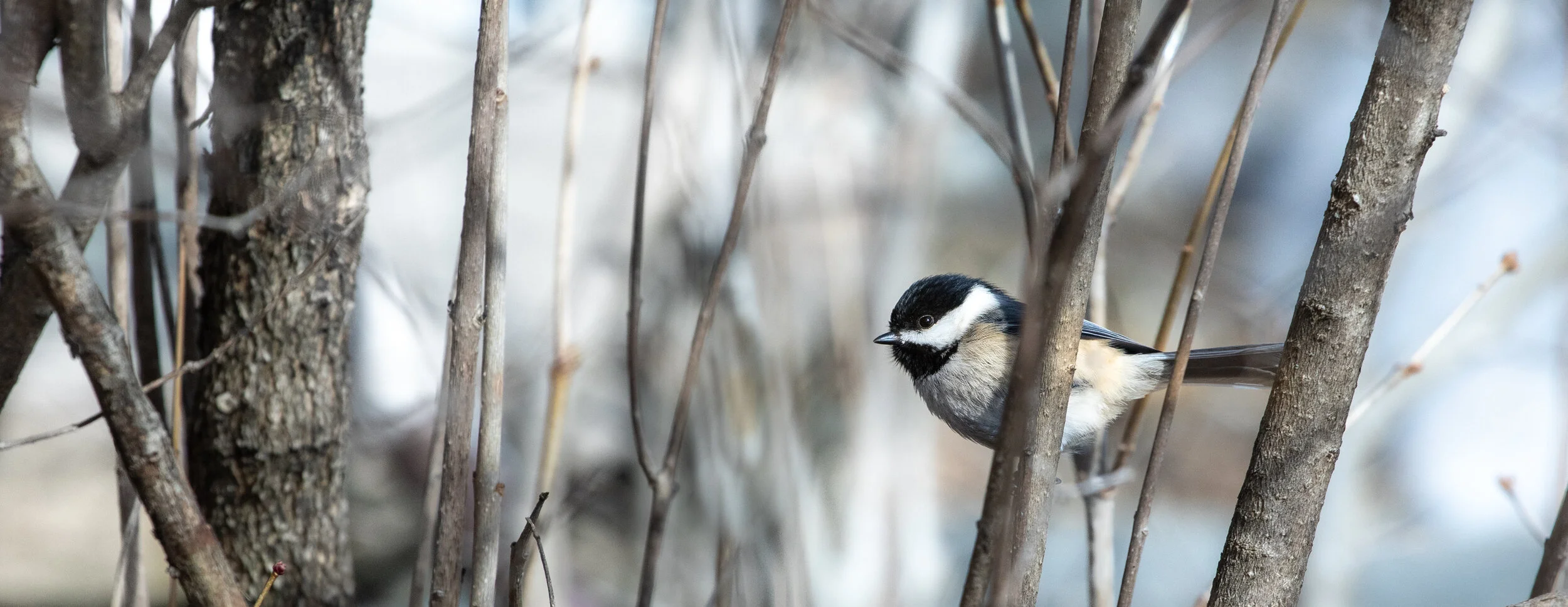A chickadee perches on an icy branch. Photo: Pieter van Loon
Chickadees. One of the most common birds in New Hampshire, and active all winter whatever the temperature. How do they survive the long, dark, cold nights?
Any animal active in winter needs to balance the amount of heat and energy lost, with the food and energy (heat) they take in. A chickadee, weighing all of 10 grams, with a body temperature over 100 degrees, has to keep busy finding food pretty much all day long to be able to tolerate cold nighttime temperatures.
Like all birds, they have the advantage of dense layers of feathers that create insulating air spaces to help trap body heat. Notice how fluffy they look at your feeders on the extra frosty mornings? Chickadees also benefit from Countercurrent Heat Exchange, essentially a web of blood flow in their legs to reduce heat loss through those skinny appendages sticking out of the feathers, while providing enough heat to prevent frostbite.
Chickadees (and other warm-blooded animals) create heat through metabolism—food and fat is their fuel. The use of muscles when they are active also creates heat. But where does the heat come from when they are roosting for the night? Shivering is a common adaptation for birds to use to create heat when they are not active.
Nearly all birds overwintering in northern New England shiver through the night or during periods of inactivity. By reducing the length and number of shivering bouts, chickadees can reduce their body temperature by as much as 10 degrees. Maintaining a slightly lower body temperature means they are using less energy to stay warm. In the morning, they increase their shivering to bring their body temperature back to normal.
Of course chickadees also look for and use roost sites that help insulate them from the cold. Cavities in trees and old woodpecker holes are commonly used as “winter homes” where several members of a winter flock will spend the night. Huddling is a good winter adaptation, too. Several other small winter birds use similar strategies—nuthatches, golden crowned kinglets, and brown creepers—all shivering and huddling through the cold night!
Banner: A chickadee in winter. Photo: Pieter van Loon


